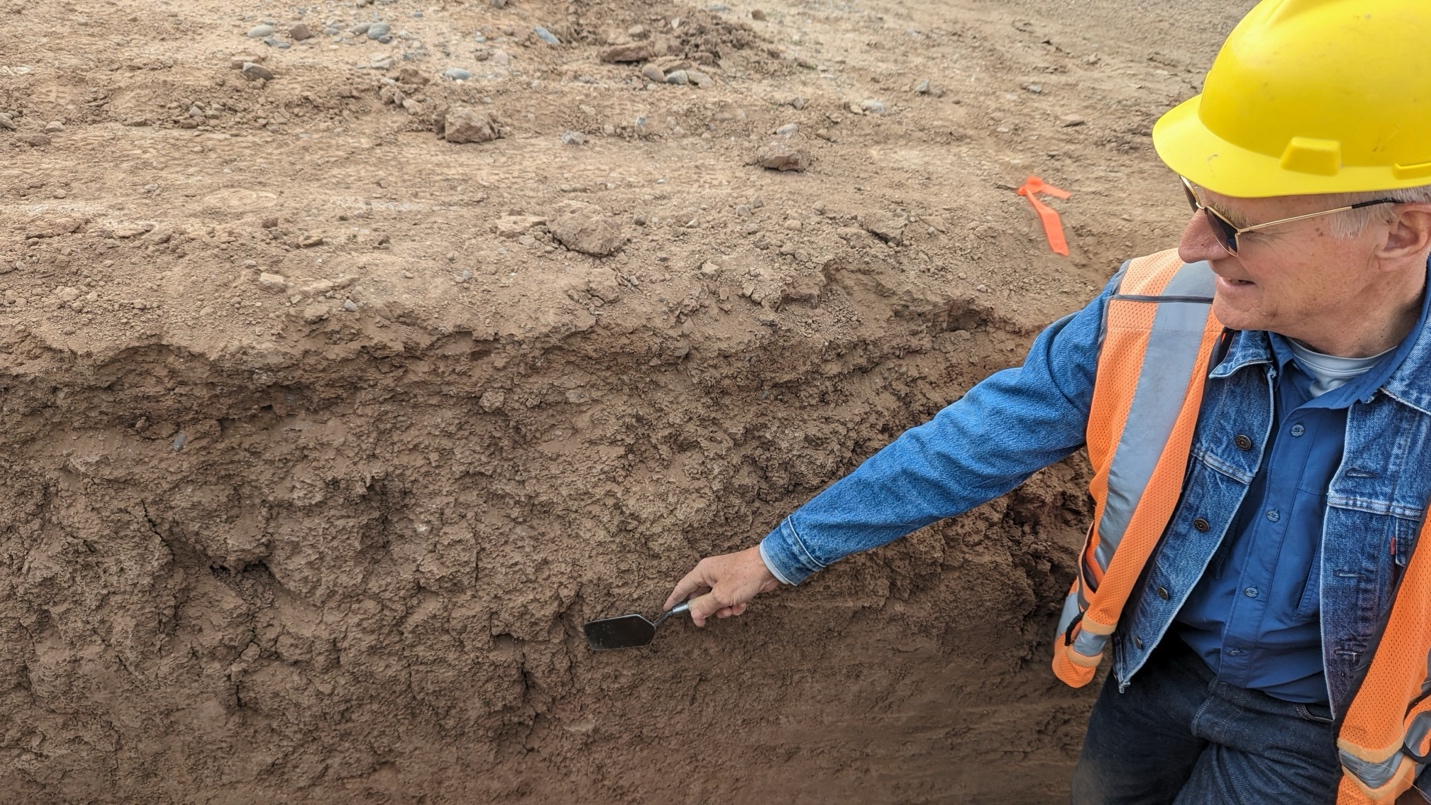
Gary Huckleberry – Decline of Hohokam Culture Based on Soil Degradation
September 15 @ 7:00 pm - 8:30 pm MST

Thick, dark, clay soil near downtown Phoenix, Arizona, historically known as Salt River Adobe. This was the first mapped soil in the U.S. recognized by soil scientists to have been largely formed by ancient canal irrigation. Photo by Laurene Montero.
Today, there is global interest in understanding how humans impact the soil and the implications of these impacts for environmental health and food production. Thousands of years of canal-irrigation farming in southern Arizona altered natural desert soils. Although obscured by recent surface activities, these ancient agricultural legacies document some of the long-term effects of canal irrigation on soil, some of which are deleterious to crop production. This raises questions as to what degree ancient irrigation negatively impacted soil fertility and whether this contributed to the eventual decline in Hohokam (AD 450–1450). My presentation will discuss the impacts, positive and negative, of ancient irrigation on soil quality, focusing on Hohokam canal-irrigated agricultural soils in the Phoenix Basin. I will review cases where soils are documented to have been altered by ancient canal irrigation. Although prolonged irrigation locally degraded soils and probably caused some areas to be agriculturally abandoned, the impact on soil quality was variable, suggesting anthropogenic soil degradation is an unlikely driver of Hohokam decline. More work is needed to document ancient irragric soils as they help us to understand better the region’s agricultural history and long-term human-environmental relationships.
 All Events
All Events